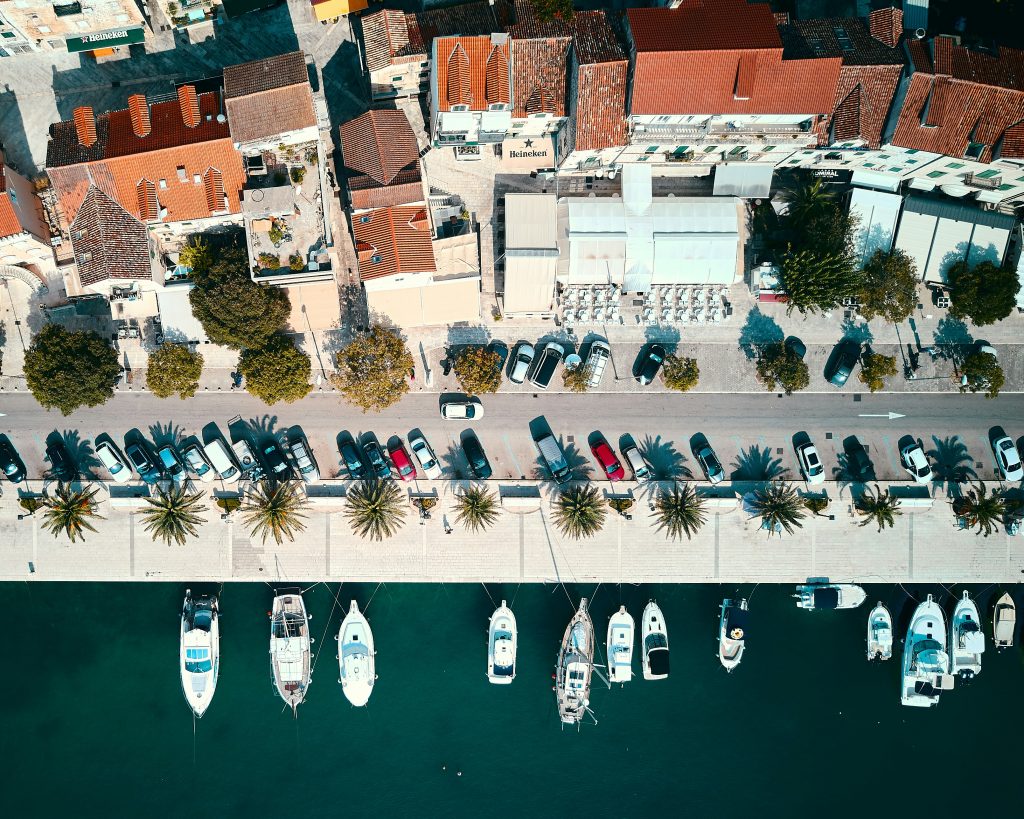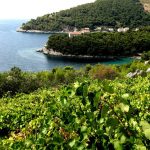May the 1st, 2024 – Excessive waste left by the summertime hoards are causing issues. In some Croatian tourist destinations, such as Šibenik, there can be as much as 400 tonnes of rubbish extra per month during the season.
As Ana Roksandic/Poslovni Dnevnik writes, last year alone, 19.5 million tourists (17 million of them foreign nationals) visited various Croatian destinations. Such steep figures are amazing for the economy and GDP, but we shouldn’t forget: Such a large number of people also means a massive amount of waste. One of the strongest assets with which Croatia as a country attracts guests is precisely the amount of pristine, clean nature.
In order to achieve consistent overall attractiveness, Croatian tourist destinations must be clean, organised and tidy, and for this a high-quality and efficient waste management system is required.
It is undeniable that communal services in coastal cities face a much larger amount of work during the summer compared to the rest of the year. Naturally, this has caused additional problems for some, and prompted others to introduce press bins throughout cities.
In Crikvenica, the frequency of removal of mixed municipal waste during the summer tourist season increases from two removals per week in winter to three removals per week in summer. In other areas that are particularly burdened, waste is removed daily. Sometimes, removals take place several times a day.
smart bins for croatian tourist destinations
“Such frequent removal of waste from the coastal area is necessary because tourist destinations must be clean and tidy, although this significantly increase business costs,” explained Karla Knežević, deputy director of Eko Murvica, a utility company owned by Crikvenica and the Vinodol Municipality.
In addition to higher costs, in Crikvenica there is also the problem of a lack of seasonal workers, as well as the difficulty of educating those workers who don’t understand Croatian.
Proof that such significantly increased volumes of waste represent financial challenges is also confirmed by Rovinj, where they’re committed to reducing the amount of waste in their city. From 2017 to today, the Municipal Service managed to reduce the annual amount of mixed municipal waste in that Istrian town from almost 13 thousand tonnes to 9143 tonnes. Of this amount, 2,356 tonnes come from tourist companies in the area of Rovinj and Bale.
Since August 2020, Rovinj has introduced the separate collection of bio-waste from kitchens and canteens, and this year this initiative is being extended to tourist camps. All of this is being done in order to contribute as much as possible to reducing the total amount of waste. Last year in Rovinj, the amount of mixed municipal waste decreased by 4% during the summer, while the amount of recycled and other waste increased by 25% compared to 2022.
“Despite the reduction in the amount of waste, the financial aspect of its management remains challenging. Currently, the cost of waste disposal is 736,344 euros, while the return and utilisation of what the Communal Service Rovinj-Rovigno manages to collect on the market is only 23,851 euros,” said Cristina Golojka, adviser for information affairs at the Rovinj City Council and Mayor’s Office.
In Rovinj, the biggest challenge is the lack of infrastructure for further processing and conversion of disposed waste into secondary raw materials within Croatia. “This problem not only hinders the financial viability of the disposal process, but also limits the potential for the complete recycling and reuse of materials,” notes Golojka.
Municipal workers in other popular Croatian tourist destinations such as Šibenik, Dubrovnik and Makarska also have a lot more work on their hands during the summer. Last year in Šibenik, there was an increase in mixed municipal waste during the summer season of as much as 400 tonnes per month, and this year they expect a 10 percent increase in the amount of waste.
The biggest producers of waste in Dubrovnik are hotels and catering and hospitality establishments, where the most biodegradable waste is also produced. For this reason, the company Čistoća Dubrovnik introduced the collection of biodegradable waste from kitchens and canteens. In addition, due to the large amount of waste in the historic centre, containers were distributed to catering and hospitality trades in order to be able to control the amount of waste, as well as billing processes.
When this year and last year are compared in the period from January the 1st to April the 15th, the amount of waste in Dubrovnik increased by 4.5%. Municipal officials therefore expect an increase during the summer as well, but not by more than 3%. Makarska, as a very strong tourist destination, achieves more than a million overnight stays every single summer, which is greatly felt in the amount of waste left there over the summer period. In that Central Dalmatian area, it’s up to four times more than in the colder part of the year.
That’s why Makarska already has well-established patterns for all sorts of problems associated with a large increase in waste. Smart bins have also been installed in Makarska that contain a press and can hold seven times more waste than the capacity of the bin itself.
Smart bins have been placed along the beaches and along waterfront because these are extremely popular locations with a large number of visitors every day. In addition, Makarska uses special vehicles for waste collection during the summer and hires a larger number of workers. In the busiest locations, workers collect waste up to four times a day during the summer.
digital records
August is always a record holder for Makarska in terms of the amount of collected waste, as 1,200 tonnes of mixed municipal waste are collected in that month alone. Since January the 1st this year, the company Makarska has has had digital records of waste and carried out the separate collection of waste at doorsteps with blue and green bins and yellow bags.
After the introduction of digital records, the amount of mixed waste in Makarska decreased, and the city believes that the positive trend of waste sorting will continue during the summer tourist season. Waste sorting containers are available at the most frequented locations, and they hope that tourists will follow the positive example of care for the environment that Makarska has already shown.










